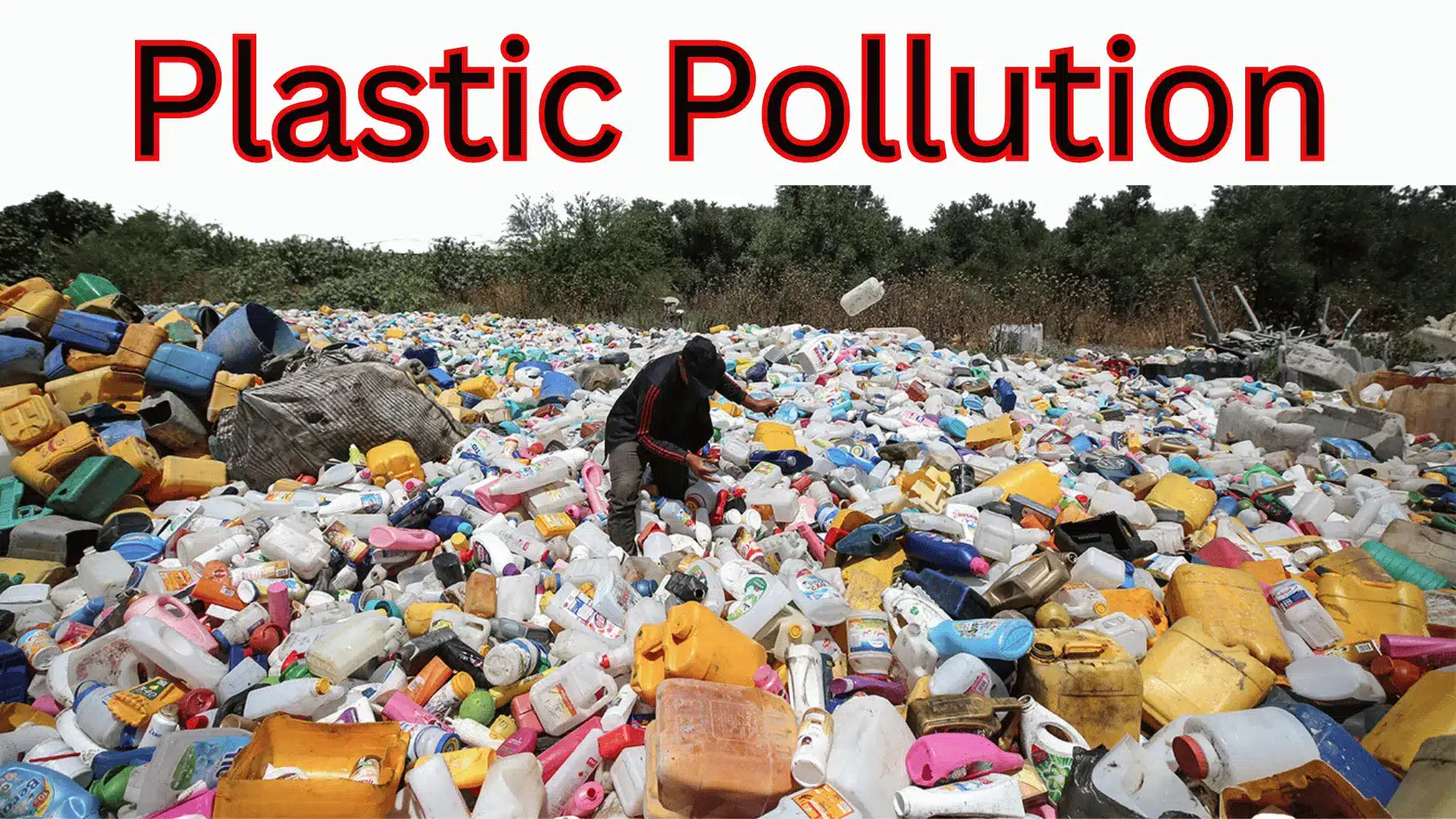Dive deep into the pervasive plastic pollution crisis, as we reveal its far-reaching consequences and explore comprehensive solutions to combat this global menace. Gain valuable insights and strategies to protect our environment and safeguard the future of our planet.
Introduction
Plastic pollution, a relentless adversary to our environment, poses a daunting challenge in the modern world. From bustling urban centers to the most secluded corners of the wild, plastic waste is omnipresent, causing harm to ecosystems, wildlife, and human well-being. This in-depth article undertakes a thorough examination of the complex problem of plastic pollution, delving into its catastrophic effects, closely inspecting its underlying factors, and offering a variety of potential remedies to address this urgent worldwide issue.
The Perils of Plastic Pollution
Plastic pollution presents a multifaceted threat, with adverse consequences at every ecosystem level. From the smallest plankton to the largest marine mammals, the world’s oceans bear the brunt of this crisis. Birds, which often mistake plastic debris for food, ingest these pollutants, leading to starvation and severe reproductive issues. This widespread contamination is a stark reminder of the profound and far-reaching consequences of our single-use plastic dependency.
The Alarming Scope of the Problem of Plastic Pollution
The enormity of the plastic pollution crisis is genuinely astonishing. Every year, an astounding 8 million tons of plastic refuse find their way to our oceans, reminiscent of the ceaseless unloading of a fully packed waste truck into the sea every sixty seconds. To put this concerning figure into perspective, if present trends in plastic consumption and disposal endure, it is foreseen that by 2050, the volume of plastic in our oceans will exceed that of fish.
Certainly, it is imperative to acknowledge, however, that it is not limited to marine settings. Instead, it extends its grasp into terrestrial ecosystems, where it significantly taints soils and disrupts delicate ecological balances. Consequently, this widespread contamination not only affects marine environments but also has far-reaching consequences for land-based ecosystems.
Microplastics: The Unseen Menace
Beneath the surface of the visible plastic debris crisis, however, there lies another insidious and pressing threat: microplastics. These incredibly small plastic particles, measuring less than 5mm in dimension, are disturbingly omnipresent in our surroundings. In fact, these tiny pollutants are not only difficult to detect but also have wide-ranging implications for the environment and human health.
These tiny fragments can be located in our water sources, soil, and even the atmosphere we inhale. Their exceedingly small size facilitates their integration into the food chain, potentially leading to enduring health concerns for human beings and wildlife. The extensive prevalence of microplastics underscores the formidable challenge they present and emphasizes the immediate need for measures to combat plastic pollution in all its manifestations.
The Culprits and Contributors
A comprehensive understanding of the sources of plastic pollution is paramount to devising effective mitigation strategies. Indeed, while responsibility for this issue is shared among individuals, industries, and governments, it is imperative to recognize the key contributors to the crisis. In particular, pinpointing these major contributors can aid in the development of effective solutions.
Single-Use Plastics
Single-use plastics, including plastic bags, straws, and disposable cutlery, are a substantial part of the problem.Certainly, while responsibility for this issue is shared among individuals, industries, and governments, it is imperative to recognize the key contributors to the crisis. In particular, pinpointing these major contributors can aid in the development of effective solutions.. Efforts to reduce their consumption and promote sustainable alternatives are gaining momentum worldwide.
Inefficient Waste Management of Plastic Pollution
Inadequate waste management and recycling systems exacerbate the problem of plastic pollution. Many regions lack the infrastructure to handle the mounting volume of plastic waste, resulting in environmental leakage. Improved waste management practices and the promotion of recycling are crucial steps toward reducing plastic pollution.
Plastic Production
The plastics industry continues to experience exponential growth, with production rates soaring year over year. The extraction and production of plastics rely heavily on fossil fuels, contributing to greenhouse gas emissions. A transition toward sustainable materials is imperative to address plastic pollution at its source.
Solutions and Hope on the Horizon
Amidst the dire circumstances, there is room for optimism. Individuals, communities, and governments are taking meaningful steps to combat plastic pollution. A comprehensive array of strategies and solutions are pivotal in mitigating this crisis.
Reduce, Reuse, and Recycle
At the individual level, reducing plastic consumption, reusing items, and recycling responsibly can make a significant difference. Simple changes, such as carrying reusable bags and water bottles, can substantially reduce one’s plastic footprint. Consequently, these small individual actions can collectively lead to remarkable change.
Policy and Legislation of Plastic Pollution
Governments worldwide are implementing stringent regulations to reduce plastic use and encourage responsible disposal. Certainly, measures such as comprehensive bans on single-use plastics, alongside the implementation of extended producer responsibility (EPR) programs and the imposition of plastic taxes, are steadily gaining momentum in various regions. Consequently, these innovative strategies are not only indicative of a growing global awareness of plastic pollution but also signify a shift towards a more sustainable and environmentally responsible approach.. These strategies are designed to promote the responsible use and disposal of plastics.
Innovation and Alternative Materials
As we strive for more environmentally responsible options, the creation of biodegradable plastics and the advocacy for substitute materials like plant-based packaging provide optimism for a greener future. Dedicated efforts from researchers and businesses are focused on uncovering and incorporating eco-conscious alternatives to conventional plastics.
Public Awareness and Education
Elevating public awareness regarding the ramifications of plastic pollution plays a pivotal role in addressing this crisis. Informing individuals about the extensive consequences of their actions can foster more environmentally conscious behavior and empower consumers to make well-informed choices.
Technological Advancements
In addition to behavioral changes and policy measures, technology has a role in tackling plastic pollution. Advances in waste-to-energy technology, recycling innovations, and plastic-eating enzymes offer promise for reducing the environmental burden of plastic waste.
| Aspect | Details |
|---|---|
| Definition | Accumulation of plastic in the environment, harming ecosystems and human health |
| Types of Plastic Pollution | – Microplastics – Macroplastics – Single-use plastics – Plastic bags – Plastic bottles |
| Environmental Impact | – Endangers marine life – Pollutes water bodies – Disrupts ecosystems – Contributes to climate change |
| Human Health Impact | – Contamination of food and water sources – Health issues due to ingestion or inhalation of microplastics |
| Global Statistics | – Millions of tons of plastic waste generated annually – Over 8 million tons of plastic enter oceans each year |
| Solutions | – Reduce single-use plastics – Promote recycling – Implement stricter waste management policies – Innovate biodegradable alternatives |
(FAQs)
What is plastic pollution?
Plastic pollution refers to the accumulation of plastic waste in the environment, causing harm to ecosystems, wildlife, and human health.
What are the different types of plastic pollution?
Major types include microplastics (tiny plastic particles), macroplastics (larger plastic items), single-use plastics (straws, bags), plastic bottles, and more.
How does plastic pollution impact the environment?
It endangers marine life, pollutes water bodies, disrupts ecosystems, and contributes to climate change through its production and disposal.
What are the health effects of plastic pollution on humans?
Plastic pollution can contaminate food and water sources, leading to health issues when consumed. Microplastics may also pose risks when inhaled or ingested.
How much plastic waste is generated globally?
Globally, millions of tons of plastic waste are produced annually, with over 8 million tons entering oceans yearly.
What are some examples of solutions to combat plastic pollution?
Solutions include reducing single-use plastics, promoting recycling, implementing stricter waste management policies, and developing biodegradable alternatives.
Where is plastic pollution most prevalent?
Plastic pollution is widespread, but it particularly affects marine environments due to improper disposal and plastic’s ability to travel through waterways.
How long does it take for plastic to decompose?
Depending on the type, plastic can take hundreds to thousands of years to decompose fully, leading to long-term environmental impacts.
Can we recycle all types of plastic?
Not all plastics are easily recyclable. Different types have varying recycling capabilities, with some being more recyclable than others.
What can individuals do to reduce plastic pollution?
Individuals can make a difference by using reusable bags and containers, avoiding single-use plastics, supporting recycling initiatives, and advocating for policies that reduce plastic waste.
Conclusion of Plastic Pollution
Plastic pollution is a critical global crisis that necessitates immediate action. Through collaborative actions involving individuals, communities, businesses, and governmental bodies, we have the potential to address and triumph over this pressing challenge, setting the stage for a more pristine and healthier planet. The time is ripe to confront plastic pollution directly, with the ultimate goal of freeing our Earth from the grip of this plastic menace.

